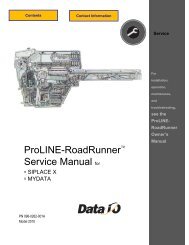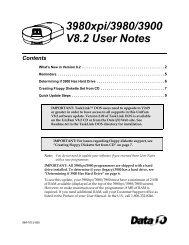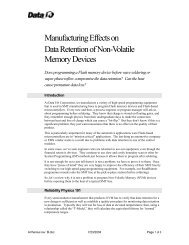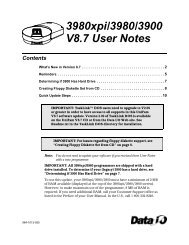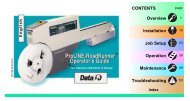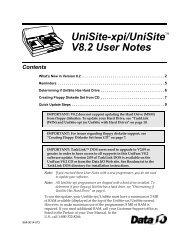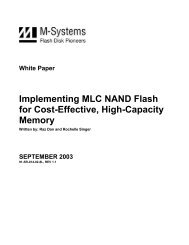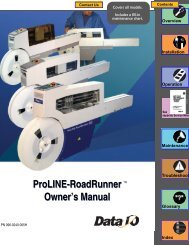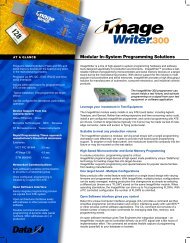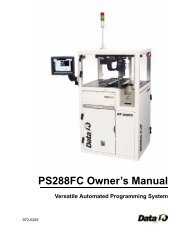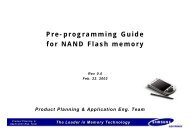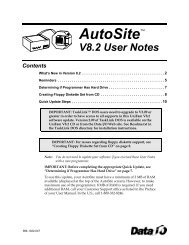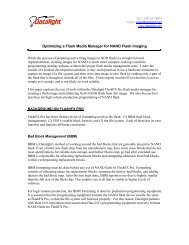3980xpi Users Manual - Data I/O Corporation
3980xpi Users Manual - Data I/O Corporation
3980xpi Users Manual - Data I/O Corporation
Create successful ePaper yourself
Turn your PDF publications into a flip-book with our unique Google optimized e-Paper software.
Commands<br />
� Memory Begin Address<br />
Specifies the first hex address in RAM to load data from a device. Also<br />
specifies the first address where a device is programmed/verified. If the<br />
user memory is RAM, it is a beginning RAM address. If the user memory is<br />
disk, it is a beginning disk file address. The Memory Begin Address must be<br />
an even address if you selected a 16-bit device. The default address is 0.<br />
� Device Begin Address<br />
Specifies the first address used in device operations. This option is used for<br />
memory devices only.<br />
� Device Block Size<br />
Defines the size, in hex, of device data used in device operations. When<br />
you select a device, Device Block Size is set to the device size and normally<br />
does not need to be changed. It is also automatically set to a smaller value<br />
if the Device Begin Address is nonzero. This parameter can be changed if<br />
desired. If a zero is entered, the Device Block Size is set to the device size.<br />
� Illegal Bit Check (Y,N)<br />
Enables or disables the illegal-bit test. This test compares data in a device<br />
against data in the programmer's RAM to determine if the device has<br />
already-programmed locations of incorrect polarity.<br />
For example, the programmer returns an illegal-bit error in the following<br />
situation: data in RAM indicates a specific bit should be in an<br />
unprogrammed state while the corresponding bit in the device is in a<br />
programmed state. This parameter is enabled by default.<br />
� Blank Check (Y,N)<br />
Enables or disables the blank check test. A Blank Check test checks a<br />
device for programmed bits. This parameter defaults to Y, which enables<br />
the test.<br />
� Compare Elec ID (Y,N)<br />
Compares the electronic ID of the device against the electronic ID of the<br />
selected algorithm.<br />
� Enable Yield Tally (Y,N)<br />
When enabled, directs the programmer to keep a running tally of the<br />
programming yields for the last sixteen types of devices programmed.<br />
These totals show how many devices passed and failed, and what specific<br />
errors, if any, have occurred. This parameter defaults to N, which disables<br />
the test. A more complete description of this feature can be found in the<br />
“Yield Tally” section of this chapter.<br />
� Program Security Fuse (Y,N)<br />
Enables or disables the programming of the security fuse. To program the<br />
security fuse, set this parameter to Y and set the Security Fuse <strong>Data</strong><br />
parameter to 1. This parameter defaults to N, which disables programming<br />
of the security fuse.<br />
� Erase EE Device (Y,N)<br />
Bulk erases the electronically erasable devices before the programmer<br />
attempts to program them.<br />
� Odd/Even Byte Swap (Y,N)<br />
When enabled, swaps data at memory address locations during a load,<br />
program, or verify operation. The contents of user RAM are not altered.<br />
<strong>3980xpi</strong>/3980/3900/2900 User <strong>Manual</strong> 4-23




